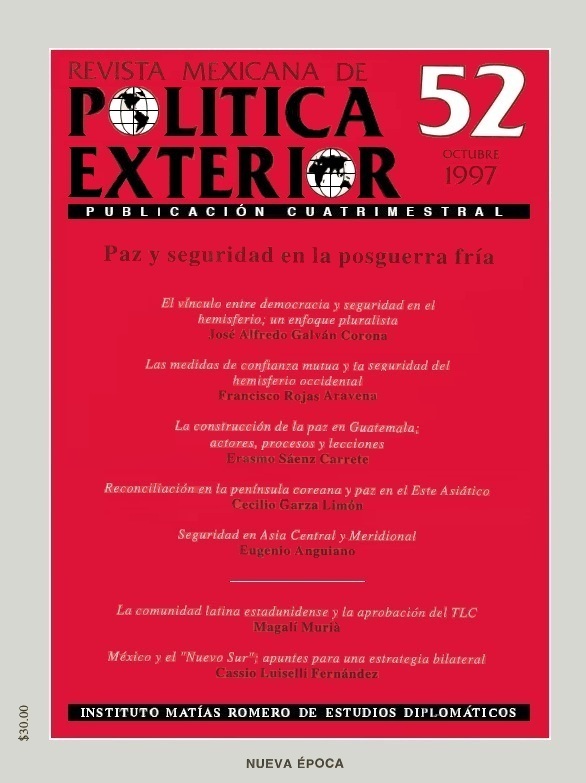Building Peace in Guatemala: Actors, Processes and Lessons
Main Article Content
Abstract
The final peace agreements for Guatemala were signed on December 29, 1996. Nevertheless, the scopes of the peace process go beyond the mere signing of these agreements; they have opened up new horizons for Guatemala and for Central America as a whole. The very process has shown itself to be a model for peace process mechanisms in the future because of its forms and because of the actors involved. The signing of peace for Guatemala is the culmination of various efforts, from those of the Guatemalans themselves—government, guerrilla, business organizations, non-governmental organizations (NGO), political parties, and others—to those that owed their origin to the participation of other actors whose contribution was determining in the signing of peace—Contadora group, Países Amigos Group, the UN, and Mexico, among several others. In addition to describing and analyzing the work of these players, the essay studies the whole of the diplomatic efforts that made it possible to sign the peace agreements; in particular, it underlines the role played by Mexico in building the pathway of peace for Guatemala, not just with diplomacy, but as a refuge for the victims of armed conflict and as headquarters for the peace negotiations that were gradually introduced in the basic accords of the peace-making process. In the conclusions, the author stresses those that, in his opinion, are the nine most important lessons left by the peace process for Guatemala.

